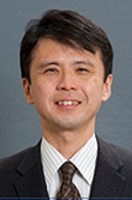Professor Goro Mizutani

School of Materials Science
Japan Advanced Institute of Science and Technology (JAIST), Japan
Goro Mizutani received his B. S. from University of Tokyo in 1981, and his degree of Doctor of Science from the same university in 1986. In 1986 he became a Postdoctoral Fellow of the Japan Society for the Promotion of Science and then a research associate at Research Institute of Electrical Communication of Tohoku University. He became an associate professor in Tohoku University in 1992 and then moved to Japan Advanced Institute of Science and Technology (JAIST) in 1993. From 1996 to 1999 he was joint appointed as a researcher in Precursory Research for Embryonic Science and Technology (PRESTO), Japan Science and Technology Corporation. From 1999 to 2000 he was a visiting researcher at Institute of Solid-State Physics, University of Tokyo. In 2006 he became a full professor at JAIST. From 2006 to 2010 he was a team leader in Core Research for Evolutionary Science and Technology (CREST), Japan Science and Technology Corporation. On the administration side, he was a deputy trustee of Education Division of JAIST from 2012 to 2014. From 2014 to 2015 he was the director of Center of Nanomaterial Technology of JAIST. From 2020 up to now he is the director of the Library of JAIST.
He has been focusing on laser spectroscopy of solid matter and development of new non-linear optical microscopes. He developed the world’s only confocal sum frequency microscope and observed SHG and SFG microscopic images of starch in plants for the first time. Starting from that observation, he observed many non-linear optical images of starch structures in rice seeds, and found facts related to improvement of rice varieties. He observed many life-related substances in nature and in spider silk he found a surprising symmetry breaking effect in its microstructure. He is a physicist and so he naturally has also obtained many interesting findings in inorganic substances. For photocatalyst titanium oxide, he observed surface electronic levels near the bandgap by SHG spectroscopy and argued its relationship with catalytic activity.



